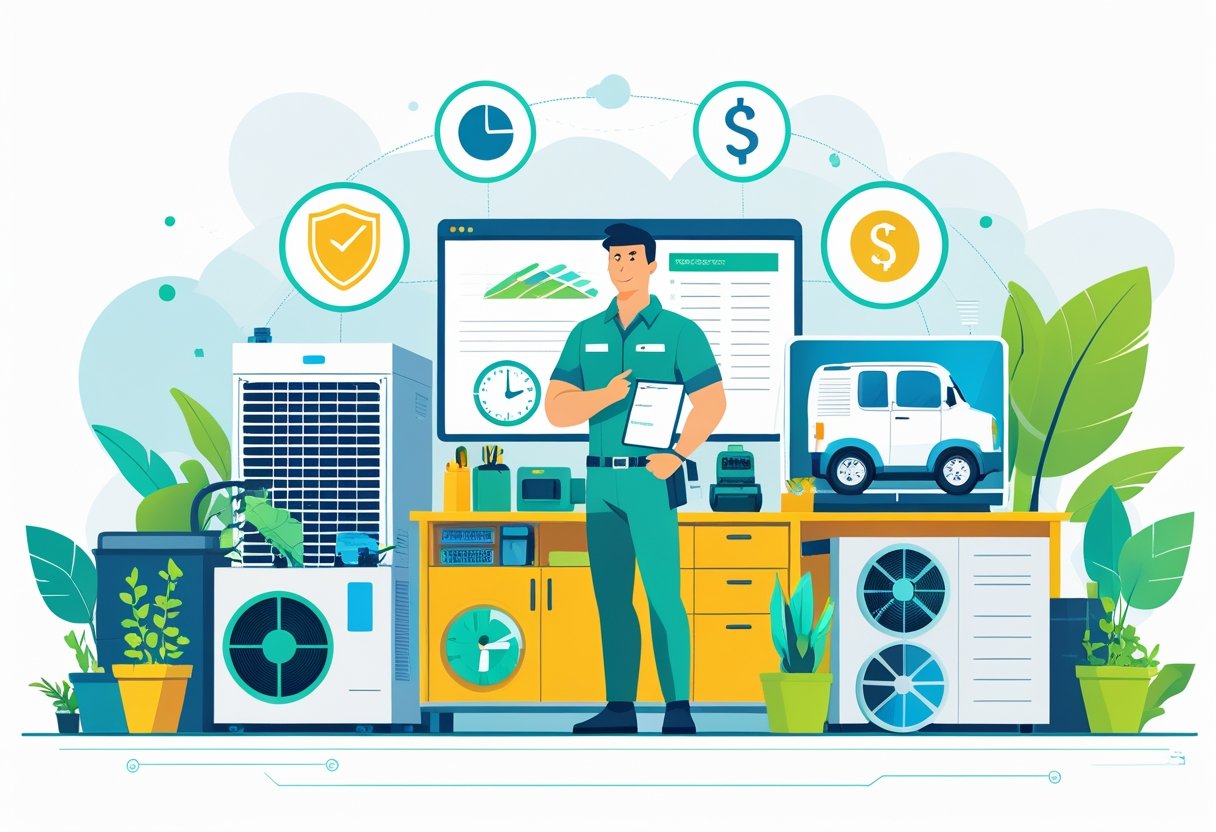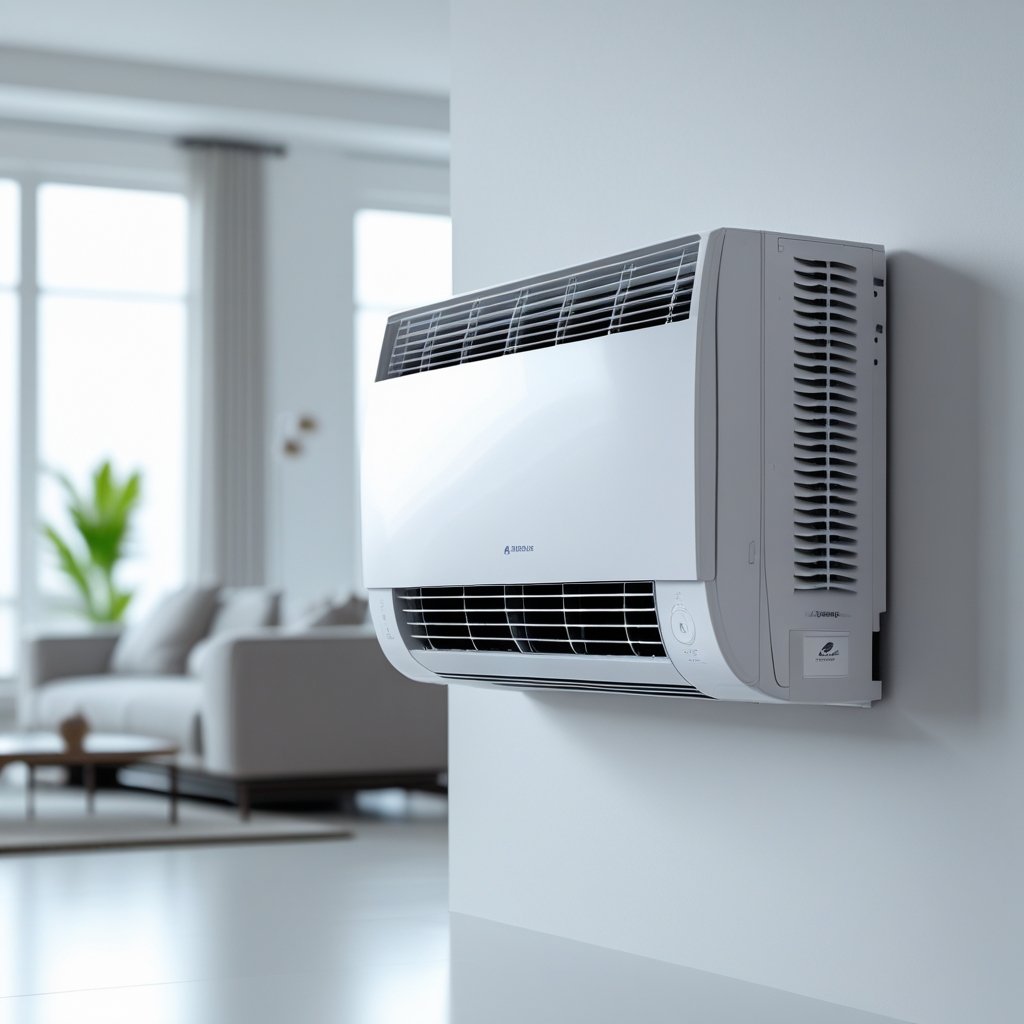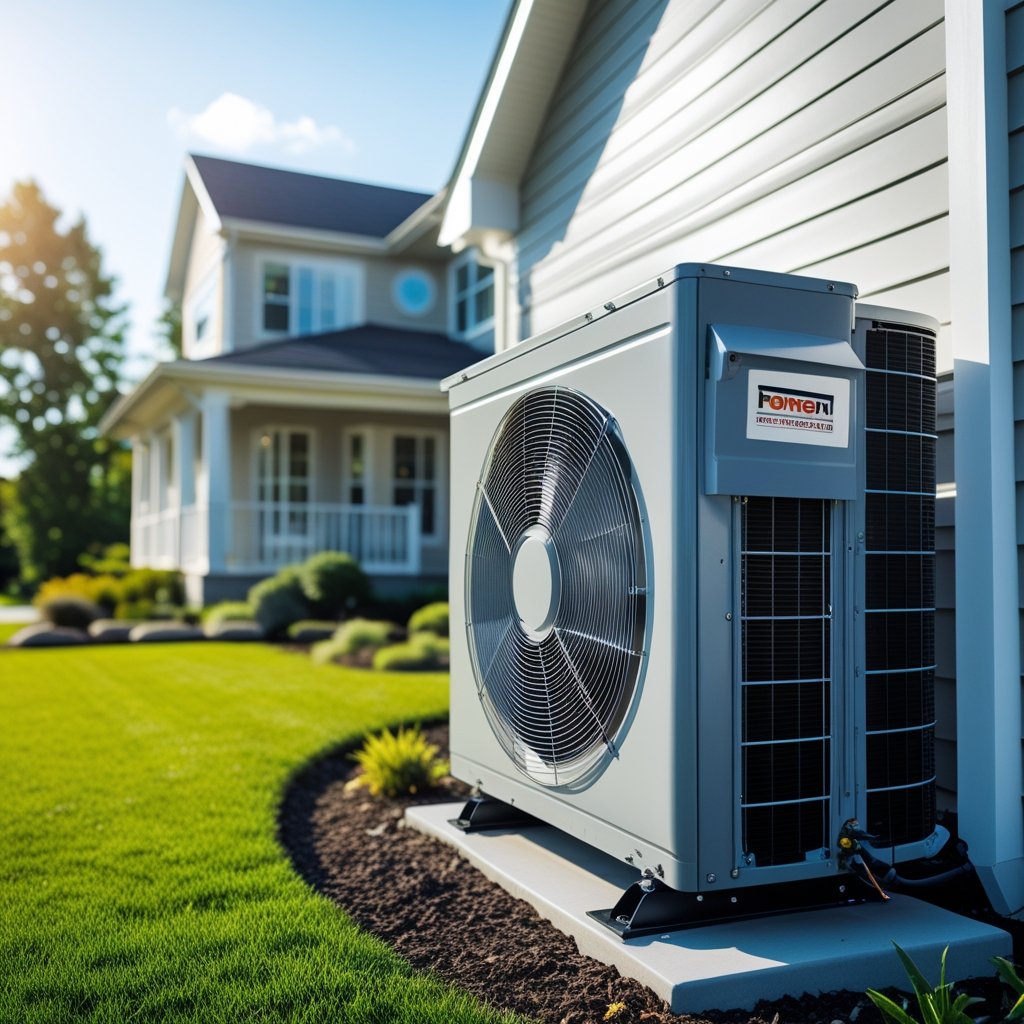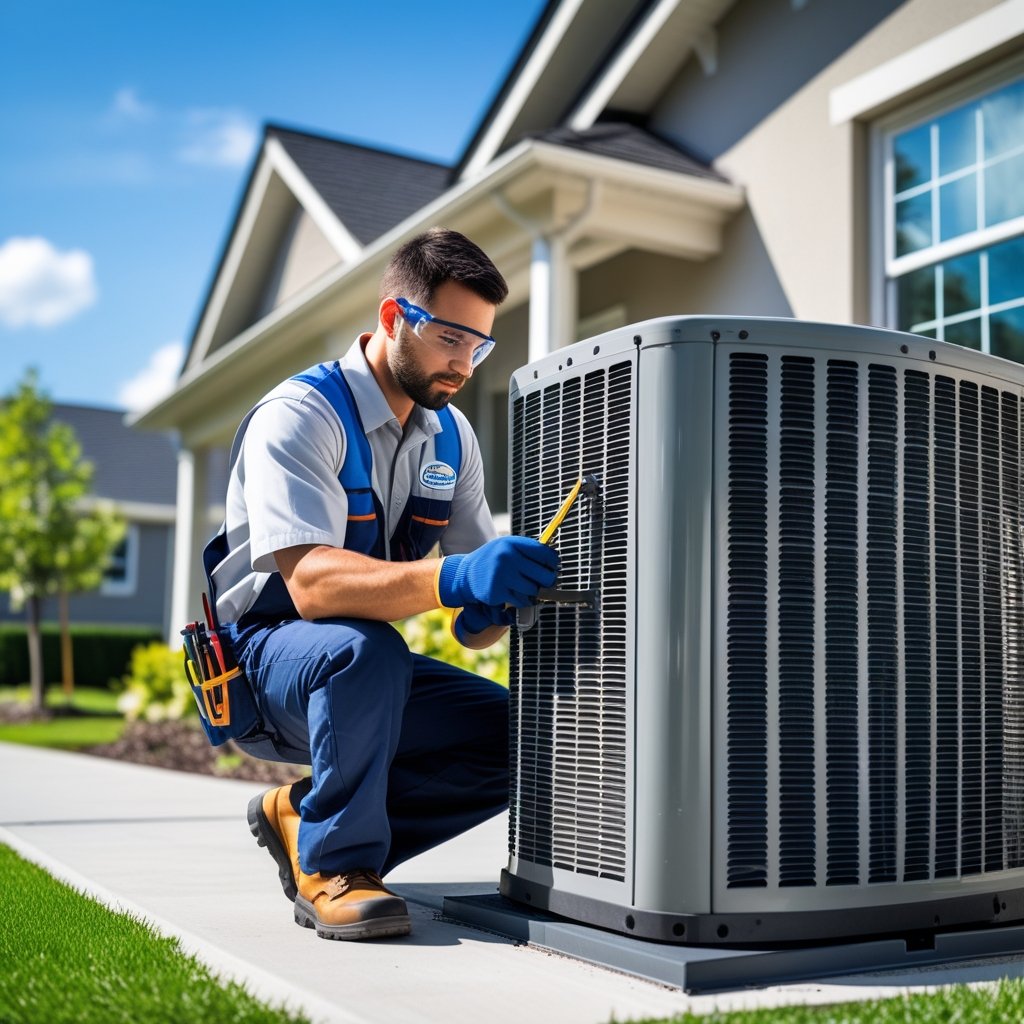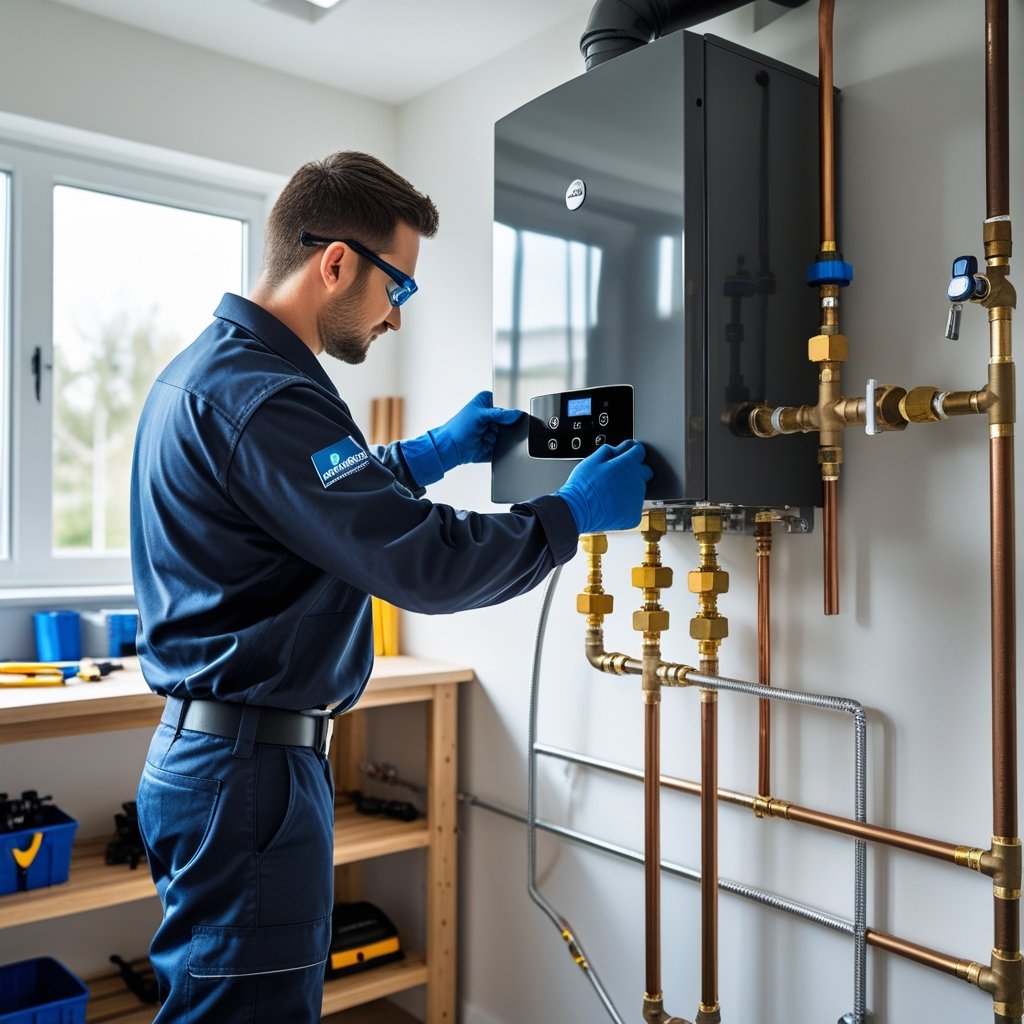A well-structured maintenance plan is essential for any home or business looking to optimize its systems and minimize unexpected disruptions. Investing in a maintenance plan leads to long-term savings, improved efficiency, and peace of mind, allowing you to focus on what truly matters. When implemented correctly, these plans enhance the reliability of your plumbing, HVAC, and electrical systems, preventing minor issues from escalating into costly repairs.
At Leo Kob Co., we understand the unique needs of properties in South Central Pennsylvania. Our commitment to quality service ensures that your maintenance plan is tailored to maximize the lifespan of your systems. By being proactive with maintenance, you not only safeguard your investments but also create a more comfortable and efficient environment.
Embracing maintenance planning brings numerous benefits, such as priority scheduling and repair discounts, which can significantly reduce your overall costs. With the right approach, you can elevate your property’s maintenance strategy from reactive to proactive, ensuring that you enjoy the advantages of well-maintained systems throughout the year.
How Maintenance Plans Improve Equipment Reliability
A well-structured maintenance plan plays a crucial role in enhancing equipment reliability. By focusing on preventive measures and routine tasks, these plans help minimize unexpected failures and maximize asset performance over time.
Preventing Unexpected Equipment Failures
Unexpected equipment failures can lead to costly downtime and emergency repairs. A comprehensive maintenance plan includes routine checks that help identify potential issues before they escalate. Regular inspections often catch small faults, allowing for timely repairs.
Implementing preventive maintenance helps you address wear and tear, which, if ignored, could result in a complete breakdown. In this way, you can ensure smoother operations and a significantly lower risk of disruptions.
Extending Equipment Lifespan
Routine maintenance is essential for prolonging the lifespan of your equipment. By following a structured maintenance schedule, you address problems early, preventing them from causing irreversible damage.
For instance, regular lubrication of moving parts and timely replacement of worn components significantly extend the operational life of machinery. This attention to detail also helps you avoid premature replacements, saving money in the long run. Implementing these strategies is a smart investment in the longevity of your assets.
Enhancing Asset Performance
Enhancing the performance of your assets is a primary benefit of a well-executed maintenance plan. Regular maintenance tasks ensure that equipment operates at peak efficiency. Improved reliability directly translates to better productivity and efficiency in your operations.
By addressing issues quickly and continuously optimizing maintenance processes, businesses can achieve higher asset reliability. This consistent approach not only improves performance but also instills confidence in the reliability of your systems. For instance, Leo Kob Co. emphasizes routine maintenance to keep your plumbing and HVAC systems operating efficiently, ensuring a better experience for your residential or commercial needs.
Boosting Operational Efficiency and Performance
Implementing a robust maintenance plan significantly enhances operational efficiency and boosts performance across your organization. Key aspects like scheduled maintenance, reduced downtime, and effective resource utilization can transform how your business operates and delivers value.
Increasing Productivity With Scheduled Maintenance
Scheduled maintenance is crucial for maximizing productivity. By planning maintenance activities in advance, you ensure that your assets are serviced without disrupting daily operations. This proactive approach allows your equipment to function optimally, thereby enhancing overall productivity.
Regular maintenance checks help identify potential issues before they escalate, which can lead to smoother operations. For example, if your HVAC system is regularly serviced, it will run more efficiently, helping maintain a comfortable work environment. When equipment works better, employees can focus more on their tasks instead of dealing with breakdowns.
Reducing Unplanned Downtime
Unplanned downtime can severely impact your business's bottom line. A well-structured maintenance schedule can help mitigate this risk by addressing issues before they lead to equipment failures. For instance, preventive maintenance strategies allow you to schedule repairs during off-peak hours, minimizing disruption.
In addition, this approach can significantly increase asset uptime. Regular inspections and swift repairs can prevent equipment from going offline unexpectedly. By investing in maintenance, you create a reliable operational environment, which means fewer surprises and delays that could impact your project timelines.
Improving Resource Utilization
An effective maintenance plan also optimizes resource utilization. By ensuring that your equipment is functioning at its highest capability, you can make better use of your workforce and materials. This means reducing wasted resources and improving the allocation of your maintenance team.
For example, when your team knows that machines are reliable and efficient, they can focus on higher-value tasks instead of reactive maintenance. This improved workflow leads to better time management within projects, ultimately contributing to more efficient operations. Leo Kob Co. understands the importance of maximizing every resource while maintaining high service standards in mechanical contracting.
Cost Savings and Budget Optimization
Implementing a solid maintenance plan can lead to significant cost savings and budget optimization for your business. By focusing on strategic practices, you can reduce overall maintenance costs while enhancing operational efficiency.
Lowering Maintenance Costs
One of the primary benefits of a maintenance plan is the potential to lower your maintenance costs. Regular inspections and scheduled maintenance help identify issues before they escalate into costly repairs. For instance, adhering to a maintenance checklist ensures that all equipment is serviced timely, preventing unexpected breakdowns.
By investing in preventive maintenance, you can avoid the expenses associated with emergency repairs. Properly maintained systems tend to operate more efficiently, translating to lower energy bills over time. Incorporating services from companies like Leo Kob Co. ensures you have expert guidance on keeping your systems in optimal condition.
Efficient Inventory Management and Spare Parts Usage
Effective inventory management is crucial for minimizing costs. Maintaining an organized inventory of spare parts allows you to have necessary components on hand, reducing downtime during repairs. This proactive approach can prevent delays and avoid costly interruptions in operations.
Utilizing maintenance resources can streamline the spare parts purchasing process. Tracking usage patterns helps you forecast needs better and take advantage of bulk purchasing discounts. When you know what parts are likely to fail, you can stock up accordingly, ensuring you have what you need when it matters most.
Avoiding Deferred Maintenance Expenses
Deferred maintenance can lead to greater expenses down the line. When repairs and maintenance are postponed, small issues can develop into major problems that require expensive fixes. Regularly scheduled maintenance prevents this scenario, saving you from unplanned costs.
Additionally, companies that delay maintenance often face inefficiencies in their operations. Proper maintenance keeps systems functioning at peak performance, which is essential for budgeting. By addressing maintenance needs in a timely manner, you ensure reliability and avoid the financial pitfalls that come with neglect. Engaging a trusted provider like Leo Kob Co. can help keep your systems compliant and functioning efficiently.
Enhancing Safety Standards and Compliance
Establishing robust maintenance plans plays a crucial role in improving safety standards and ensuring regulatory compliance. By prioritizing safety, you foster a proactive environment that benefits both personnel and equipment.
Promoting Workplace Safety
Effective maintenance plans significantly improve workplace safety. Regular inspections and maintenance reduce the risk of accidents and equipment failures. Implementing a risk assessment strategy allows you to identify potential hazards and rectify them before incidents occur.
You should also engage employees in safety training, which reinforces correct protocols and encourages a safety-first mentality. Features such as clear signage and accessible safety equipment enhance awareness and preparedness. By making safety a shared responsibility, you promote a culture where everyone is vigilant about their environment.
Meeting Health and Safety Regulations
Compliance with health and safety regulations is non-negotiable for any organization. Employers must adhere to standards set by regulatory bodies to ensure the safety of their workforce. Regular equipment maintenance is essential in achieving these standards, as it helps confirm that machinery operates safely and efficiently.
Implementing systematic maintenance schedules aligns with compliance requirements and minimizes the risk of legal issues. Using tools such as safety audits can help you gauge your current compliance level. Investing in safety training and resources ultimately protects your workers and supports your commitment to a safe workplace.
Incorporating these strategies into your maintenance plan ensures that your facilities remain compliant and safe, positioning your business, like Leo Kob Co., as a responsible and trustworthy leader in the industry.
The Role of Maintenance Management Systems
Maintenance Management Systems enhance the efficiency and effectiveness of maintenance tasks. By integrating technology, these systems streamline operations, enabling better planning, scheduling, and performance tracking.
Adopting Computerized Maintenance Management Systems (CMMS)
Investing in a Computerized Maintenance Management System (CMMS) is vital for modern maintenance practices. A CMMS helps you centralize your maintenance tasks, making it easier to manage assets, equipment, and facilities. This software allows maintenance managers to track work orders, schedule preventive maintenance, and maintain accurate records.
With a CMMS, you gain access to a user-friendly platform that automates routine tasks. This leads to time savings and reduces the risk of human error. For companies like Leo Kob Co., implementing a CMMS can improve service delivery and customer satisfaction.
Optimizing Maintenance Scheduling and Work Orders
Efficient maintenance scheduling is key to minimizing downtime and enhancing productivity. A well-implemented maintenance management system enables you to create optimized schedules based on equipment usage and historical data. You can manage work orders efficiently, ensuring that tasks are prioritized according to urgency and resource availability.
Automating these schedules helps reduce the chaos often associated with manual scheduling. It also allows maintenance planners to adapt quickly to unexpected repairs or changes in workload, improving your operational agility.
Leveraging Data-Driven Insights and Performance Metrics
Utilizing data-driven insights within a maintenance management system can significantly enhance decision-making. By analyzing performance metrics, you can identify trends that inform maintenance strategies and optimize resource allocation. Key Performance Indicators (KPIs) such as equipment downtime, repair costs, and maintenance frequency provide valuable feedback on efficiency.
Incorporating these metrics into your maintenance strategy allows for continuous improvement. You can make informed decisions about asset lifecycle management and identify opportunities for cost savings. Companies like Leo Kob Co. benefit from tracking these performance metrics, resulting in better service quality and extended asset lifespans.
Types of Maintenance Strategies and Their Benefits
Maintenance strategies play a crucial role in ensuring the longevity and reliability of your assets. Understanding the types available can help you optimize performance and reduce costs.
Preventive and Proactive Maintenance
Preventive maintenance focuses on regularly scheduled maintenance tasks to prevent equipment failures. This can include routine inspections, adjustments, and part replacements based on manufacturer recommendations.
Proactive maintenance, on the other hand, aims to identify and eliminate potential issues before they arise, often incorporating data analysis and trend monitoring. Both strategies enhance equipment lifespan and minimize unplanned downtime, ultimately leading to cost savings.
For example, regular HVAC tune-ups can prevent major breakdowns, ensuring your systems run efficiently year-round. By investing in these maintenance plans, like those offered by Leo Kob Co., you can achieve peace of mind regarding your home systems.
Predictive and Condition-Based Maintenance
Predictive maintenance leverages technology to monitor equipment conditions and predict failures before they happen. Using sensors and data analysis, this method can significantly reduce maintenance costs while ensuring that critical systems remain operational.
Condition-based maintenance, similar to predictive maintenance, relies on real-time data but focuses more on actual operational conditions rather than predictive modeling. This allows for targeted interventions when needed.
These strategies are particularly valuable in environments with complex systems, where timely maintenance can prevent larger, more costly issues. Implementing these practices may lead to increased reliability of your assets.
Reliability-Centered and Total Productive Maintenance
Reliability-centered maintenance (RCM) prioritizes the most critical equipment based on its impact on operations. This structured approach assesses how each system must perform and identifies necessary maintenance tasks.
Total productive maintenance (TPM) focuses on continuous improvement, involving all employees in the maintenance process to maximize equipment effectiveness. This can lead to higher productivity and reduced waste over time.
Both RCM and TPM align maintenance efforts with organizational goals, improving operational efficiency. For businesses and homes alike, these strategies create a collaborative environment that fosters reliability and enhances the lifespan of your assets.
Frequently Asked Questions
Maintenance plans provide valuable insights into equipment longevity, operational efficiency, cost savings, and safety. Understanding these aspects can help you make informed decisions about your maintenance strategy.
What are the key advantages of implementing a preventive maintenance program?
A preventive maintenance program significantly reduces the risk of unexpected equipment failures. It allows for regular inspections and timely repairs, promoting consistent performance. Additionally, it can enhance energy efficiency, leading to lower operational costs over time.
How can maintenance plans improve equipment longevity and performance?
Regular maintenance minimizes wear and tear, which prolongs the life of your equipment. By addressing potential issues early, you can avoid major repairs that would otherwise lead to equipment replacement. Consistent upkeep also ensures that systems are running at peak performance, resulting in better energy use.
What is the role of maintenance planning in operational efficiency?
Effective maintenance planning streamlines operations by scheduling regular maintenance activities without disrupting workflows. It helps allocate resources efficiently, ensuring that equipment is available when needed. This proactive approach reduces downtime, allowing for continuous productivity.
In what ways do maintenance programs contribute to cost savings?
Maintenance programs can significantly lower costs by preventing major repairs and prolonging equipment life. Regular service reduces the likelihood of emergency repairs, which can be costly and disruptive. Additionally, efficient systems lead to lower energy bills, providing further financial savings.
What are the potential drawbacks of a maintenance plan?
While beneficial, maintenance plans can require upfront investment and consistent commitment. If not properly implemented, they may lead to unnecessary expenses. It's important to assess your needs and ensure that the plan aligns with your operational goals to avoid potential inefficiencies.
How does regular maintenance impact safety and compliance in a facility?
Regular maintenance is crucial for ensuring that equipment meets safety standards and regulatory compliance. A well-maintained system reduces hazards and minimizes the risk of accidents. Keeping up with maintenance can protect your staff and customers, contributing to a safer environment.
At Leo Kob Co., we emphasize the importance of tailored maintenance plans that foster reliability and longevity in your plumbing, HVAC, and electrical systems.

